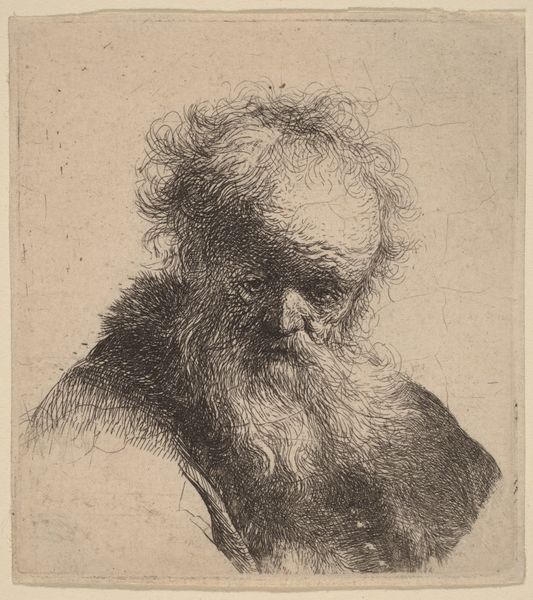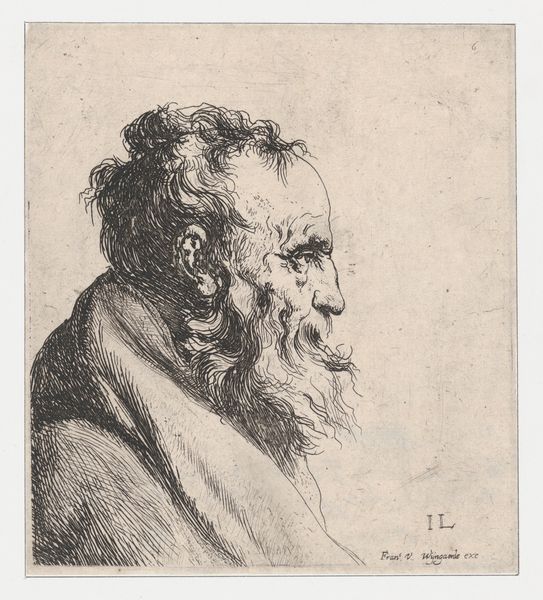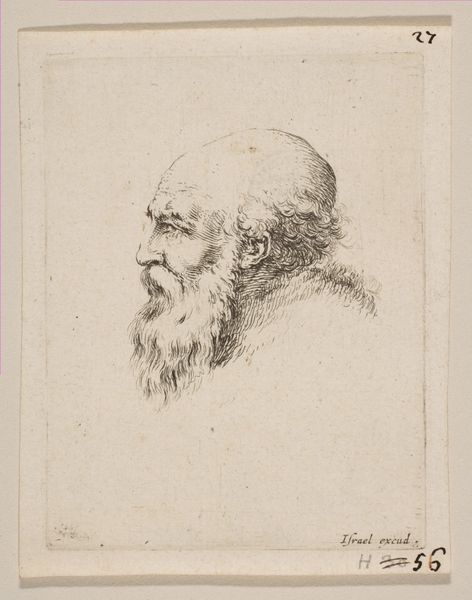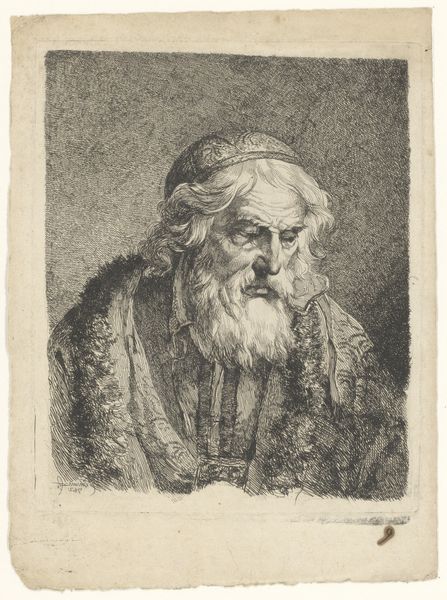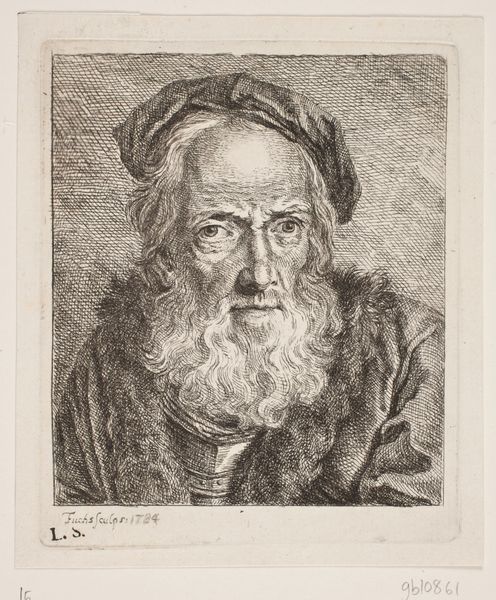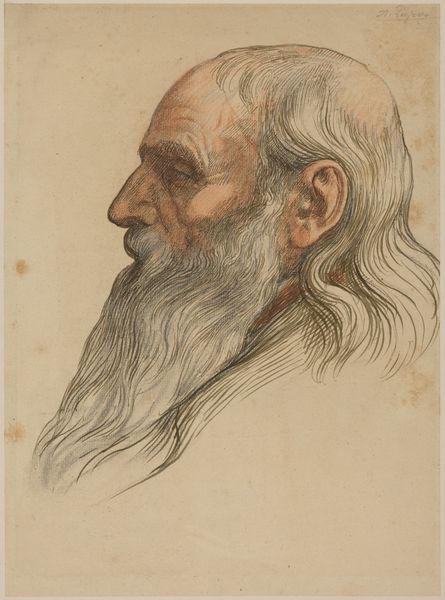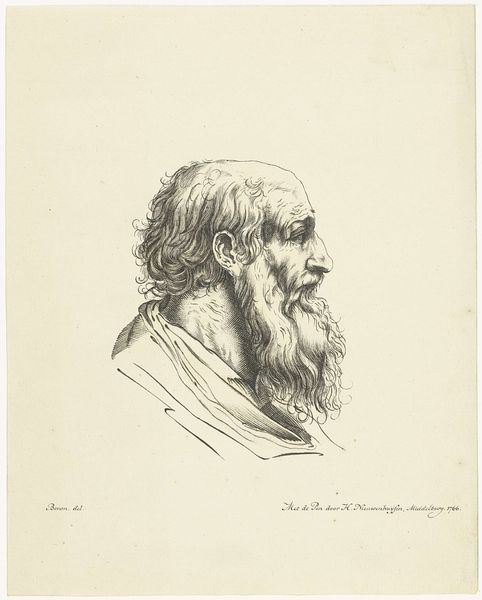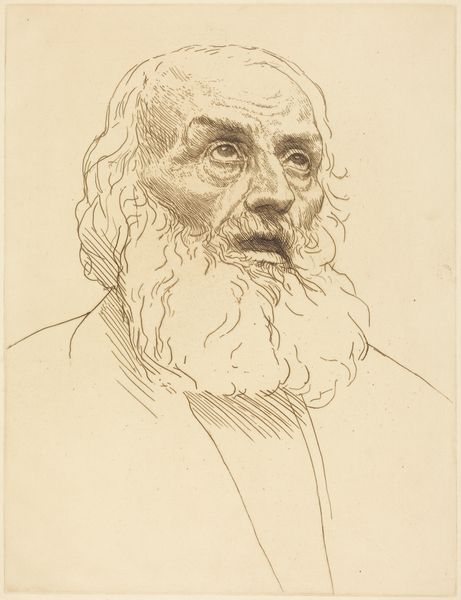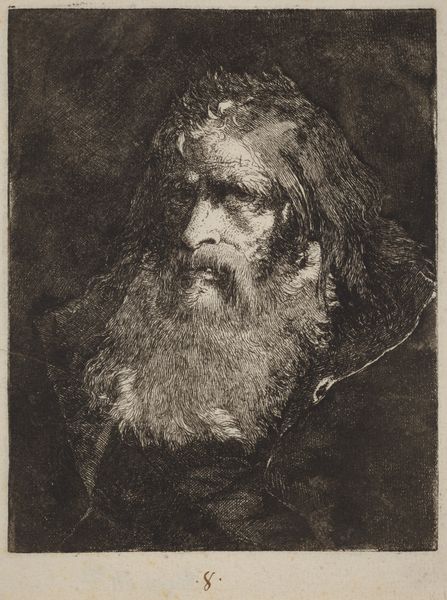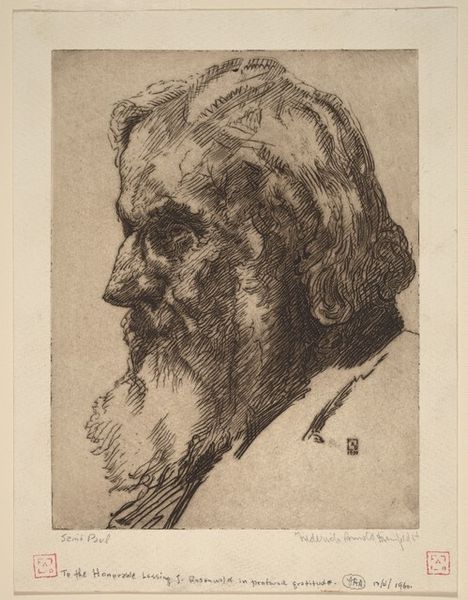
drawing, print, etching, paper, ink
#
portrait
#
drawing
#
baroque
# print
#
etching
#
paper
#
ink
#
pencil drawing
Copyright: National Gallery of Art: CC0 1.0
Curator: Looking at Salomon Koninck's "Bust of an Old Man in Profile, Facing Right" from 1638, made with etching and ink on paper... what strikes you first? Editor: Oh, immediately, that face! It’s a landscape etched with time. Every line seems to whisper a story. I get the feeling he could see right through you, all knowing like Gandalf from "Lord of the Rings." Curator: It's fascinating you say that. Koninck, deeply influenced by Rembrandt, often depicted elderly figures. The prevalence of such portrayals might mirror broader social considerations concerning aging, wisdom, and respect within Dutch society during that era. He's not just drawing an old man; he's representing something more. Editor: True, there's an immense humanity there. And it's more than just skill; look how Koninck captures the wisps of the beard, almost floating, contrasting against the densely inked coat. You know, art this intimate reminds us that even grand narratives are made up of small, personal moments. The close framing turns a social observation to private contemplation. Curator: Precisely. The texture achieved through etching is superb for this effect. It really enhances the psychological depth of the figure. Koninck used a complex pattern of fine lines to model forms and convey subtle differences of tone. We think of portraiture as reserved for the powerful, yet here’s a celebration of aging captured with striking immediacy in simple materials. Editor: Makes me think about whose stories get told, and who's often left out of history's spotlight. An anonymous man of the people is now rendered visible, a man otherwise unremarked upon... That’s the transformative power of art, isn’t it? To pause and actually see, to consider stories that have always been there. Curator: Definitely. Art helps us see, contemplate and expand our understanding of the past in a way that informs present-day dialogue. Editor: Beautiful. What a journey. A poignant little peek into the 17th century.
Comments
No comments
Be the first to comment and join the conversation on the ultimate creative platform.
